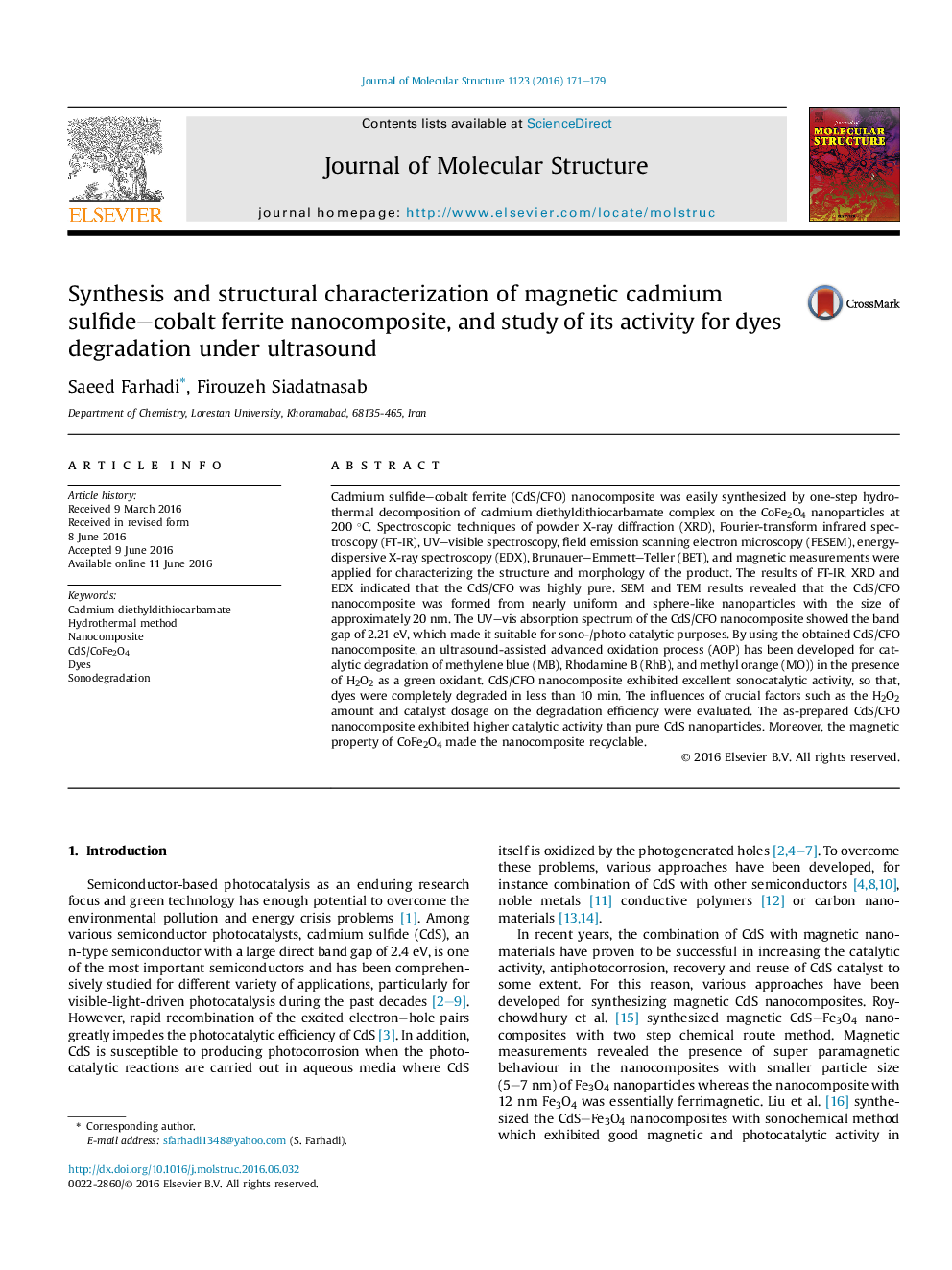| Article ID | Journal | Published Year | Pages | File Type |
|---|---|---|---|---|
| 1404727 | Journal of Molecular Structure | 2016 | 9 Pages |
•CoFe2O4/CdS nanocomposite was prepared by a facile one-step hydrothermal method.•CoFe2O4/CdS nanocomposite was identified by various techniques.•The nanocomposite exhibits excellent sonocatalytic activity in the presence of H2O2.•MB, RhB and MO dyes are degraded within very short time over the nanocomposite.•Magnetic behaviour of the CoFe2O4/CdS nanocomposite makes it recyclable.
Cadmium sulfide–cobalt ferrite (CdS/CFO) nanocomposite was easily synthesized by one-step hydrothermal decomposition of cadmium diethyldithiocarbamate complex on the CoFe2O4 nanoparticles at 200 °C. Spectroscopic techniques of powder X-ray diffraction (XRD), Fourier-transform infrared spectroscopy (FT-IR), UV–visible spectroscopy, field emission scanning electron microscopy (FESEM), energy-dispersive X-ray spectroscopy (EDX), Brunauer–Emmett–Teller (BET), and magnetic measurements were applied for characterizing the structure and morphology of the product. The results of FT-IR, XRD and EDX indicated that the CdS/CFO was highly pure. SEM and TEM results revealed that the CdS/CFO nanocomposite was formed from nearly uniform and sphere-like nanoparticles with the size of approximately 20 nm. The UV–vis absorption spectrum of the CdS/CFO nanocomposite showed the band gap of 2.21 eV, which made it suitable for sono-/photo catalytic purposes. By using the obtained CdS/CFO nanocomposite, an ultrasound-assisted advanced oxidation process (AOP) has been developed for catalytic degradation of methylene blue (MB), Rhodamine B (RhB), and methyl orange (MO)) in the presence of H2O2 as a green oxidant. CdS/CFO nanocomposite exhibited excellent sonocatalytic activity, so that, dyes were completely degraded in less than 10 min. The influences of crucial factors such as the H2O2 amount and catalyst dosage on the degradation efficiency were evaluated. The as-prepared CdS/CFO nanocomposite exhibited higher catalytic activity than pure CdS nanoparticles. Moreover, the magnetic property of CoFe2O4 made the nanocomposite recyclable.
Graphical abstractFigure optionsDownload full-size imageDownload as PowerPoint slide
